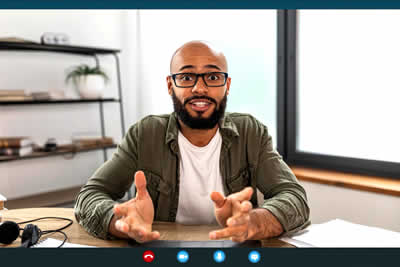Over the last decade, small businesses have become more reliant on social media as a way of boosting their sales and spreading their message across a wide audience. Many start-ups rely on online networking to promote their latest products and interact with potential clients, rather than those who chance upon a visit to their website or store.
Plenty of tools are on offer for businesses of every size, stature and nature and, with a host of engagement opportunities at both company and consumer level, the importance has never been higher for companies to ‘get smart' with the digital age.

Why do small businesses need to embrace social media?
In the current economy, it's getting even harder for small businesses and recent start-ups to make an impact online. The option of television and radio marketing isn't open to many -- whose budgets would stretch that far? -- and even advertising in newspapers and pamphlets can be a costly exercise.
This means that a growing number of people are using online media. This is because it's often free, and can be a limitless tool for growing your business, interacting with clients and marketing your product in the way you want, for as long as you'd like, and to the audience that you desire.
It seems to be a case of embracing online change or being left behind in the modern era, with most consumers spending many hours a day on social media sites; each looking for their content to be engaging, thought-provoking and shareable – often in as little as 140 characters. So it's important for small businesses to get to grips with each site quickly, in order to maximise their chances of growing.
Some of the better businesses use online networking in a laid-back, conversational way. Instead of forcing their products down the throats of their followers, they answer questions, interact with others and hint to services that could be useful in a way that opens the followers' eyes to the products on offer.
How can small businesses use social media?
It's a great way to get your products, services and message out into the public and, for the most part, online networking is a free-to-use service. Websites such as Facebook, Twitter, Google+ and LinkedIn offer an array of opportunities for a number of different audiences. All of these tools are focused on specific markets but each has its own power of boosting sales and getting people talking about your company.

For example, Facebook is more of a ‘friends and family' website that users will contact each other on, but smaller businesses may target users in a specific location (for example, the area where the business is situated) and look to boost sales that way. Or, companies can opt to
advertise on Facebook and look to encourage sales/interest through users seeing their paid-for advert.
Twitter is a different medium altogether, and one that businesses can feel freer with. Facebook is a great way to communicate with users but, if you're posting too much, then you risk turning people away from your content. Twitter is different; galvanised in a world of trends and hashtags, the site allows plenty of room to set up lists (to keep an eye on competitors, previous clients or anyone you'd like), and is a great hive of shareable content.
Then you have Google+. If you're a company that prides itself on gaining custom via your website, then this is an excellent tool to get to grips with. Google rankings and Google go hand-in-hand, so making sure that your profile is given the best chance of prosperity is an excellent way to drive your sales.
Using circles (a tool to group contacts that you're following) and communities, many small businesses advertise their best services on Google+ and use engaging, shareable content to get people talking while their corporate logo remains constant on the conversation feed. This kind of marketing is handy, too, if you're on a number of networking platforms. Customers may remember your logo and your content from Google+ when they're speaking with friends on Facebook. Word of mouth, and thus, higher volume of traffic to your website.
And of course, one of the bigger websites that is commonly used is LinkedIn. This service is primarily built for business users to connect with each other, with each profile page laid out more as an online CV rather than a traditional profile page. You can attach your current employer, former employers, information about previous and current roles, works that you're proud of and even receive endorsements from other users.
LinkedIn is a good ground for head-hunting so if you're an individual, it's a good way to search and apply for employment. However, it's just as handy for small businesses, who can use communities and connections in a similar way to Google+, while also connecting with other local businesses to grow their following.
Question: What is the second-most popular search engine after Google? Answer: YouTube. Many small businesses use promotional videos or
‘how to' guides on YouTube, as a secondary way of increasing traffic to their website. If the company has a niche, then there's more scope for a boom in sales if the nature of the video is not only engaging, but also helpful.

But what good is a YouTube video without a full description? This is where companies may opt to link to their website, add web hooks to pick up more traffic from Google searches and, above all, describe what's in the video so users can easily find their videos.
Additionally, some businesses may employ a
social media booster to enhance the visibility of their YouTube content.
Although another, more time-consuming, way is perhaps to acquire the know-how, and the best way to learn about social media is to get involved and "learn as you go". Users will often offer assistance, as will articles like this, so don't be afraid. Get involved and embrace the online age!
What are the do's and don'ts of social media?
Well, there are quite a few and, to keep things easily digestible, here's a bullet-point look of how to get it right ... and very, very wrong:
Do:
1. Add a picture of yourself and remember to smile. That's what most people will see first.
2. Place an interesting write-up of yourself or your company, on your profile page. If there's scope to add previous employment or work history, do it.
3. Keep things moving. Don't forget that you've got your account for a reason, so there's no point setting it up and then thinking that it will run itself. It won't. Get socializing.
4. Share engaging content. Most people will prefer to be offered content that they may not have seen before or may interest their followers, so if you're sharing great content, more users will be directed to your profile as a result.
5. Engage and be conversational. If someone's just asked you a question, answer them. If someone's been in touch, wish them a good day. Employ many of the tactics that you'd use in a face-to-face environment.
Do not:
1. Post offensive content. Remember, these are your customers so anything negative could impact on your sales.
2. Offend people directly. Has someone just aired an alternative view to you or badly reacted to your product? Be professional. Listen to what they are saying and answer them, but don't get riled.
3. Flood accounts. By this, we mean that you don't need to post a million things each hour. Keep it flowing, by all means, but be clever about it. There's plenty of scheduling software available so you can upload content and then set it to all be posted at different times.
4. Look needy. Pleading for followers isn't a great way to start off your account on social media and you want users to find you on merit, not because you've pleaded for their attention.
5. Neglect your profile. Fail to keep it current at your peril! And if you've got a website, add that in too. It all helps...
There's no perfect science to social media and with more platforms being born as time goes on, it's a long-game that small businesses must look to join in on if they're to boost their profits.


























